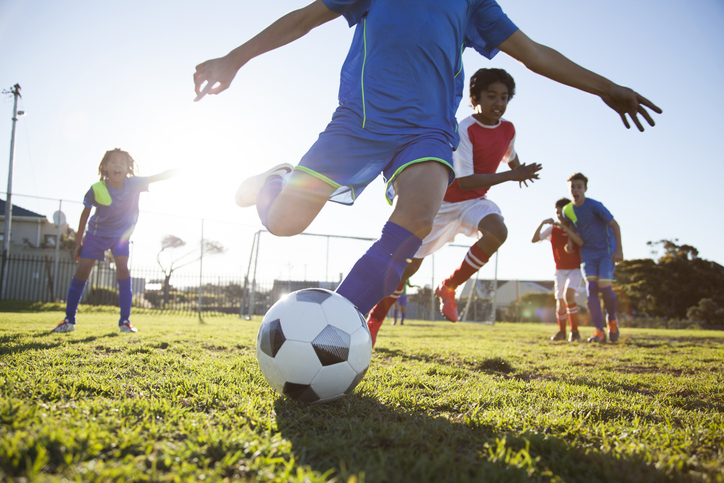(NEW YORK) — Injuries, overtraining and burnout are contributing to a high dropout rate in youth sports, according to a new report from the nation’s leading group of pediatric doctors.
The report, released Monday by the American Academy of Pediatrics, found that 70% of kids drop out of organized youth sports by age 13.
In addition, nearly 1 in 10 youth athletes experience burnout, and as many as 35% experience overtraining, according to the report.
“Sports are such a powerful and fun motivator to keep youth physically and mentally active, but some youth may feel pressure from parents, coaches and others to measure success only by performance,” Joel S. Brenner, M.D., MPH, a fellow of the AAP and an author of the report, said in a statement shared by the AAP.
Here are three questions answered about the AAP’s report and takeaways for parents.
What are the details of the report?
The AAP’s latest report replaces its first clinical report on the topic of kids and sports, which was released in 2007.
The report is meant to be a guidebook for pediatricians in how to treat youth athletes, both mentally, with risk factors like burnout, and physically.
The report notes that youth sports are the “primary route to physical activity” for kids in the United States, and can help promote lifelong habits of physical activity that help people both mentally and physically.
Noting the high percentage of kids who drop out of youth sports, the report states, “Discontinuation of sports during childhood plays a role in the more than 75% of adolescents in the United States who fail to meet physical activity recommendations.”
What are signs of burnout and overtraining?
Symptoms of burnout may include fatigue, sleep problems, muscle pain, weight changes and decreased enjoyment in sports.
Overtraining is when athletes have decreased performance with persistent fatigue or mood changes. It is estimated to affect 35% of young athletes by the time they reach adulthood.
Overuse injuries are also common in youth athletes, which researchers suspect is because young growing bones are less tolerant of stress than those of adults.
Single sport athletes, girls, children who are overweight and those who engage in repetitive movements such as running, pitching and gymnastics were found to be at higher risk for these injuries.
“Whether training is specialized or multisport, it becomes a problem when an athlete no longer has any free play time or opportunity to engage in other non-sport-related activities,” Andrew Watson, M.D., MS, a fellow of the AAP and another co-author of the report, said in a statement.
What does the report recommend for kids and sports?
To play safely, the AAP recommends young athletes participate in no more than one sport per day and ensure at least one day of rest per week, in addition to two to three months off from each sport per year.
Children and teens interested in endurance sports such as marathons should discuss their supervised training plans and undergo an evaluation prior with their pediatrician, according to the report.
Parents can also help young athletes by promoting good nutrition and sleep habits to help kids “optimize recovery,” according to the report.
The AAP acknowledges in the report that organized sports can be beneficial for kids.
Playing organized sports can help support psychosocial development, according to the report, as well as help children and teens meet their recommended physical activity of 60 minutes a day, as long as it is done in a way that is well-rounded, age-appropriate and fun.
The AAP recommends parents and coaches “measure success” in ways beyond wins and losses, noting that it should be based on the participation and effort, as well as “skill acquisition, safety and sportsmanship.”
“It’s important to teach our athletes to focus on wellness and to listen to their bodies,” Brenner said in a statement. “We can encourage mindfulness, time away from sports and other ways to prevent injury or burnout. If you have questions, always talk with your pediatrician.”
Erin Hannon, MD is a resident physician in pediatrics from Columbia University/New York-Presbyterian Hospital, and a member of the ABC News Medical Unit.
Copyright © 2024, ABC Audio. All rights reserved.












